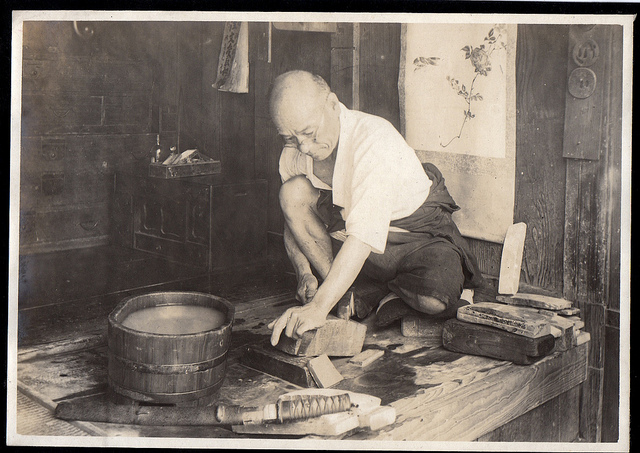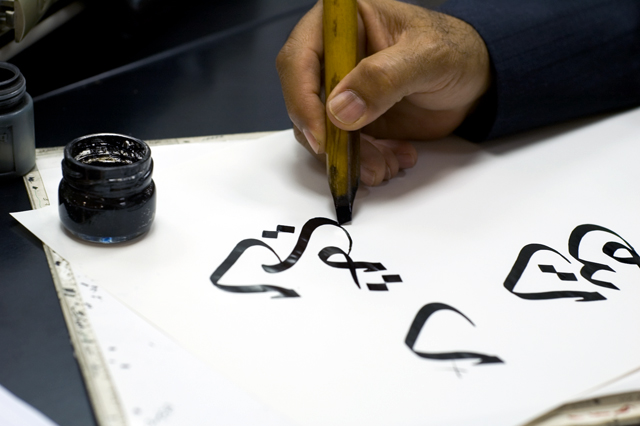The Way of the Craftsman - Routines, Repetitions and the Creative Process
Jiro Ono is 89 years old. He has an ordinary appearance of an old person, a slender body – very vital at his age, and a stern look on his face. Jiro repeats the same routine every day, even gets on the train from the same position. If you didn’t know of Jiro and sat next to him in the Tokyo subway train early in the morning when he was commuting to work, you would probably not notice him. You would probably not think that he is the best sushi chef in the world. Jiro’s restaurant - Sukiyabashi Jiro - is the only sushi restaurant that received a Michelin 3 Star rating, one of the most prestigious awards in the culinary world. There are only ten seats in the restaurant, no special ambience. Reservations need to be made 1 month in advance and are mandatory. Sushi is the only thing that is served, and most often no meal extends beyond 15 minutes, which makes Sukiyabashi Jiro, in some way, the world’s most expensive place to eat.
During his 79 years of making sushi, and only sushi, Jiro dreamed of it many times, “I would make sushi in my dream. I would jump out of bed at night with ideas” he said.
Someone said that there could hardly be anything more creative than cooking. I think chefs are all artists – they are the composers in the orchestra of flavors. When I found Jiro’s story in the exceptional documentary “Jiro Dreams of Sushi”, my obsession with daily habits of creative people compelled me to watch it again and again.
I think most of us are fascinated by the creative process of great artists, part of the reason that it is so mysterious for normal folks like you and I. I used to imagine a great artist as a messy-haired, Beethoven-looking person, who is always slightly angry or depressed. On good days, he enters a trance and makes art in his basement, or wanders around the wood seeking inspiration. On bad days, he drinks gin at nine in the morning, might take drugs in the evening, and if all hell breaks loose, blows his brain out in a tavern's restroom by midnight.
Yes there are folks like that, but it’s not what I often found in artists across various fields. What I found is tremendous discipline revealed by abiding strict routines, and relentless repetition of the craft.
W. H. Auden observed that “Routine, in an intelligent man, is a sign of ambition.”
Echoing that, Greg McKeown debunked a myth about routine in his book “Essentialism – The Disciplined Pursuit of Less”
“To some, routine can sound like where creativity and innovation go to die – the ultimate exercise in boredom.(…) And routines can indeed become this - the wrong routines. But the right routines can actually enhance innovation and creativity by giving us the equivalent of an energy rebate.”

He mentioned the work of Mihaly Csikszentmihalyi on creativity, which demonstrates how highly creative people use strict routines to free up their minds. “Most creative individuals find out early what their best rhythms are for sleeping, eating, and working, and abide by them even when it is tempting to do otherwise.”
That’s also what Anne Lamott advised in her famous memoir “Bird by Bird” - my personal favorite on writing, which also has become the bible of many writers.
“You sit down, I say. You try to sit down at approximately the same time every day. This is how you train your unconscious to kick in for you creatively.
“It is a matter of persistence and faith and hard work. So you might as well just go ahead and get started”
“I wish I had a secret I could let you in on. But I don’t. All I know is that the process is pretty much the same for almost everyone I know.”
So even though the idea of routine doesn’t seem so tempting for most of us, we – our body, our mind, our consciousness and unconsciousness - function better with routines.
Great artists don’t try to be special; they just work to get better at their craft. And that’s what makes them special.
![]()
What I also find is the important role of intuition, or what many, like Lamott above, refer to as “unconscious”. Intuition is the subtle voice that is formed through countless repetition.
Paulo Coelho, in a passage about calligraphy and the craft of blacksmithing in “The Witch of Portobello”, encapsulated the relationship between repetition and intuition:
“Look at a skilled blacksmith working steel. To the untrained eye, he’s merely repeating the same hammer blows, but anyone trained in the art of calligraphy knows that each time the blacksmith lifts the hammer and brings it down, the intensity of the blow is different. The hand repeats the same gesture, but as it approaches the metal, it understands that it must touch it with more or less force. It’s the same thing with repetition: it may seem the same, but it’s always different. The moment will come when you no longer need to think about what you’re doing. You become the letter, the ink, the paper, the word.”

My high school teacher had a favorite quote. “Discipline is freedom”, she would repeat it in front of the class many times. Of course, at that age, none of us paid attention to it. Now being a discipline freak – kind of - (find more in “Morning Rituals – On the Flow of Will Power and Discipline”), I regret I didn’t realize this truth sooner.
Many universal principles in life are paradoxical. Discipline establishes solid routines, which then make repetition possible, and intuition is eventually formed.
When watching “Jiro Dreams of Sushi”, what remains in my heart is how fulfilled Jiro is whenever he talks about his craft, his “Lighthouse”. You can see the light shining through his deep, old, crow’s feet eyes:
“All I want to do is to make better sushi. I do the same thing over and over, improving bit by bit. There is always a yearning to achieve more. I’ll continue to climb, trying to reach the top. But no one knows where the top is. Even at my age after decades of work I don’t think I’ve achieved perfection. But I feel ecstatic all day.”
“I love making sushi; I’ve never once hated my job. I fell in love with my work and gave my life to it.”
So, true artists and creative minds are not all…you know, “artistic” per se. They obey uncool routines; they repeat the same things. And amidst those most ordinary hours, they give birth to the extraordinary.
This is what I hope for, as I sit down at my desk at nine o’clock every day, not a lightning bolt striking the perfect plot for a best-selling novel (okay I do wish that once in a while), but above all, the humble stubbornness to keep doing it, again.
What about you?
What is the craft you are trying to master?
Have you created the right routines to for countless repetitions to happen?

